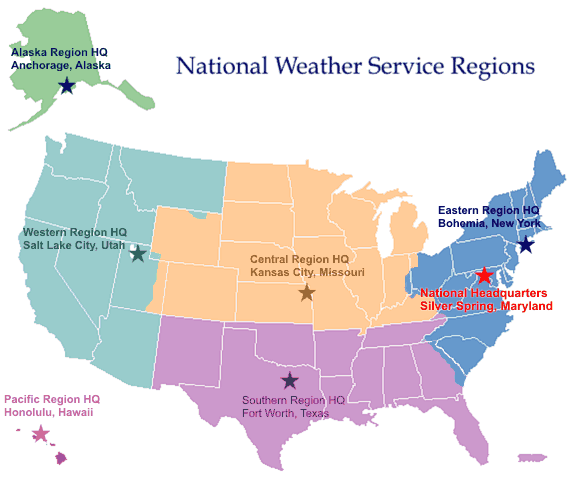
The National Weather Service (NWS) Alaska Region’s Climate Services Program centers around a number of climate change issues manifesting in Alaska and the Arctic: sea ice melt and retreat; glacier melt; warming temperatures; thawing permafrost with loss of infrastructure; precipitation pattern shifts, coastal erosion and flooding; ecosystem shifts; and potential health epidemics. The NWS Alaska Region’s Climate Services Program is addressing observations, monitoring, and assessments with its partners and collaborators to provide new climate products for a changing climate. The focus in the NWS Alaska Region is on making this information available to local and regional decision makers and the general public. As part of this effort, the NWS Alaska Region has partnered with the Regional Integrated Science and Assessment Office (Alaska Center for Climate Assessment and Policy) to provide monthly Alaska weather and climate highlights on a Web site. In addition, the NWS Alaska Region provides climate information on its regional Web site (https://www.arh.noaa.gov).
The National Weather Service (NWS) Eastern Region’s Climate Services Program supports the following climate services goals:
The National Weather Service (NWS) Central Region’s Climate Services Program covers a number of areas: agriculture, bio-energy, drought impacts and planning, and reaching out to decision makers with pertinent climate information. The NWS Central Region is committed to bringing climate information, including climate change, weather/climate data, water and drought planning information, through many entities, including extension services, state climate offices, various academic institutions, and other decision makers.
The National Weather Service (NWS) Eastern Region’s Climate Services Program supports the following climate services goals:
The National Weather Service (NWS) Pacific Region’s Climate Services Program is focused on providing timely climate information to Hawaii and Pacific Island residents, including water managers and other critical users; advancing a better understanding through research of climate variability and effects on tropical/extra-tropical rainfall and sea-levels; and developing materials and tools to assist in public climate outreach and education.
The National Weather Service (NWS) Southern Region’s Climate Services Program oversees the gathering, ingest, and dissemination of climate data for 10 southern states and Puerto Rico. It also serves as the liaison and facilitator for the exchange of climate information with all other National Oceanic and Atmospheric Administration (NOAA) offices and NOAA-supported facilities as well as stakeholders and local, state, and federal government partners.
The NWS Southern Region’s Climate Services Program is committed to providing climate services support and leadership to all 32 Weather Forecast Offices (WFOs) and 4 River Forecast Centers (RFCs) within the region to assist them in fulfilling their mission of acquiring, processing, and disseminating climate information for use by all customers and stakeholders. This includes:
The National Weather Service (NWS) Western Region’s Climate Services Program encompasses the eight most-western states in the conterminous United States. Climate in the west is extremely diverse and includes such climate-related issues as: droughts, water supply, coastal environments, agriculture, deserts, mountains, freezes, heat waves, and diverse impacts from the El Niño-Southern Oscillation (ENSO). The NWS Western Region’s Climate Services Program includes: setting programmatic policy; providing resources and guidance to field offices; ensuring quality climate data services; facilitating the exchange and interpretation of climate information and prediction products and services; providing information and facts about climate change; and nurturing and pursuing new partnerships within the climate community.